Books
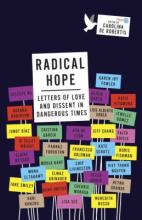
“TO MY FELLOW and artists; to my fellow readers and lovers of art; to my fellow believers in peace and a more perfect world ...”
Thus begins Viet Thanh Nguyen’s contribution to Radical Hope—“a collection of love letters in response to these political times.” The Pulitzer Prize winner (for The Sympathizer) goes on to describe his dreams for a new model for our society, one that includes prophecies, poets, and the people: “Those of us who would tear down walls and eradicate borders, and who believe in both inclusion and equality, need to use our talents to help build a coalition.”
The dozens of letters in Radical Hope illustrate the dreams of this diverse community of writers. Luis Alberto Urrea asks, “What if there is no Other? What if there is only Us?” Katie Kitamura writes of a future in which her daughter grows up believing in the generative power of language. Many of the writers pen poetic reflections on the beacons of light and love who have guided them, looking to the past to bring enlightenment into the next journey. In the final letter, Cristina García imagines the world seven generations from now, asking what that will look like and wishing upon her great-great-great-great-great granddaughter “adventure and loving protection.”

I asked colleagues here at Sojourners: What books would be in your resistance library? Their top 25 suggestions are below. Use the hashtag #MyResistanceLibrary to track our reads — and share to let us know what you’d add to the list!
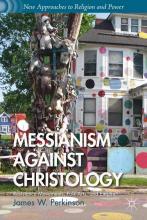
GROWING UP conservative, white, suburban, and evangelical in North America, for me nothing was more important than the Bible and Jesus. Yet like many, I have grown out of evangelicalism—not because the Bible and Jesus are no longer important, but because the “Bible answer men” have used their interpretations to justify nonsense all over the globe.
James W. Perkinson’s Messianism Against Christology is an important contribution to the Bible and Jesus reclamation project of post-evangelicals, poets, and prophets. This works delves into “the deep past” of cultures and scriptures, but begins and ends in current-day Detroit (a city where imperialism and resistance face off daily). Perkinson reads this cityscape and riffs on an alternative future glimpsed in urban folk art, hip-hop, and “rewilding” abandoned spaces.
Perkinson proclaims that “this work is a reading of the Jesus-event as movement ... and intelligible only to the degree we take such ‘movement history’ seriously.” He takes to task the monopolizing and colonizing “Western messianic complex” and the corresponding doctrine represented in classic Christology: “[N]o other name has leveraged more conquest, enslavement, and plundering in human history. ... under the spiritual sponsorship of a kind of Logos-delirium, ‘Christ’ has been made the Alpha-Male Author and Great Heavenly Apologist of the End Game of the epoch.”
Perkinson ultimately offers a theological correlate to Daniel Quinn’s Beyond Civilization. A truly biblical messianism (as opposed to Christology) is a creative, analytic critique of empire rooted in small communities of nurture and struggle. “What we need to be saved from in such an orientation,” Perkinson writes, “is the imperial pretension to conquer, control, and enslave an entire planet of resources and life forms.”
Perkinson’s own urban roots dispel the myth that those who commit to this messianism against Christology must literally check out of civilization and enter the wild. Perkinson upholds a faith that “will highlight values and recall traditions whose power is rooted in wildlands symbiotics and insist these are central to the struggle for justice in an otherwise settled lifestyle.” It’s more about a shift in mentality and sensibility than about geography.
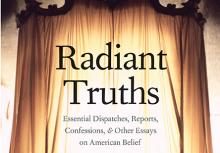
JEFF SHARLET, author of nonfiction books about faith including New York Times best-seller The Family and Sweet Heaven When I Die, isn’t so much interested in religion as he is in belief. “That interest sometimes leads me to people who might reject the term religion altogether,” he writes of drinking whiskey with Mormons and marching in Spain with Jewish-American veterans of the Abraham Lincoln Brigade, a volunteer group of up to 40,000 men and women from 52 countries who traveled to fight fascism in the Spanish Civil War.
In his newest book, Radiant Truths, Sharlet collects stories like these, stories about what happens when religious ideas meet social practice. He attributes this concept to anthropologist Angela Zito. In her essay “Religion is Media,” Zito ponders, “What does the term ‘religion,’ when actually used by people, out loud, authorizein the production of social life?” Using Zito’s question as a jumping off point, Sharlet dives into 150 years’ worth of literary journalism at the intersection of religion, culture, and politics.
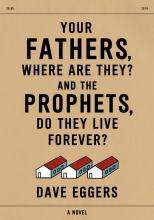
I’M IN THAT cohort of earnest, educated, now-middle-aged North Americans who fell in love with Dave Eggers’ sprawling, sometimes unapologetically self-indulgent memoir A Heartbreaking Work of Staggering Genius. All my life I had lived with an ongoing inner monologue of exaggerated self-consciousness, but I’d never read anyone who could articulate the experience as precisely, never mind playfully, as Eggers.
Eggers could have made a fortune repeating the same entertaining self-indulgence, but he’s shaped his career into anything but navel-gazing. He’s formed writing workshops for kids; started two long-running magazines; cofounded an oral history book series on human rights crises; and written a string of beautiful, compassionate books of fiction and nonfiction with an unmistakably critical eye.
In his latest novel—Your Fathers, Where Are They? And The Prophets, Do They Live Forever?—Eggers uses a dialogue-only form to tell a compact story that thunders with probity and timeless, existential urgency. The main character, Thomas, a middle-aged man with psychological issues, has conversations with six different kidnap victims—an astronaut, a former member of Congress and Vietnam vet, his high-school teacher, his mother, a policeman, and a woman he meets during walks on the beach—holding them on an abandoned military base on the California coast. He doesn’t physically harm any of them; he just wants to know where everything went wrong. Why do our friends die? Why do our career dreams come to naught? Why do the mythical promises of science, democracy, education, nationalism, law, progress, and even love fail to deliver?
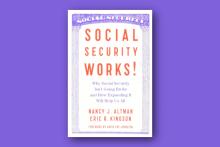
WITH A LONG history of involvement in the evolution of the Social Security program, Nancy Altman and Eric Kingson are the right analysts to explain the program and demonstrate conclusively that, with careful tending by Congress, Social Security will be there for future generations: a critical part of retirement finances for the vast majority of the American people and, for many, the only retirement support. They argue that Congress should be strengthening and expanding Social Security—and they show how this can be done and the bill paid.
The book makes clear that Social Security is not an entitlement program but a social insurance program with premiums paid through payroll taxes. Its $2.8 trillion trust fund represents the full-faith support of the American people to provide essential insurance coverage for all our people against the universal hazards of death, disability, and old age. It compares how our system stacks up against those of other advanced industrial societies. (We are distinctly less generous to our senior citizens than other developed nations.)
REBECCA TODD PETERS offers here a concise treatment of the major moral concern of a large part of Christian social ethics: the structures of globalized economic life and their manifest injustices and unsustainability. She also offers a moral framework to guide the thinking of unjustly, and often blindly, privileged First World Christians about the moral situation in which we find ourselves.
She proposes concrete action guides for how such First World Christians can gradually and intentionally empty ourselves of these privileges in order to stand in solidarity with those whose lives are harmed in the delivery of our advantages. In the end what emerges is a kind of liberation ethics for those who didn’t know they needed to be liberated—in this case, from their own advantages.

Virtue is worth thinking about. We should think, carefully, about the kind of person we want to be and the kind of habits we want to develop. In The Road to Character, Brooks asks these questions of us, rightly urging us to be concerned with developing an inner moral life of virtue and integrity. Unfortunately, his self-focused attitude toward morality leaves little room for grace for the morally weak — which is all of us.
When asked directly about the relation of grace and individual agency, at a recent Trinity Forum event, Brooks confessed that he simply didn’t know — that he had no idea which of the two should take precedence.
I don’t know Brooks’ personal faith, nor do I intend to cast aspersions on his morality. Still, he panders to all of my worst inclinations in writing The Road to Character as a stoic moral theology, with only slight glimmers of grace to lighten the way. Brooks holds up several vastly different exemplars of a moral life, from Montaigne to Eisenhower, who are united in a certain integrity and humility — an unwillingness to be governed by circumstances that are outside of our control, while focusing on the things that we can.
Brooks reduces God to being a helper needed by some, while others are perfectly capable of struggling through their moral issues alone. To Brooks, a self-built journalist should be imitated as much as a grace-oriented social worker, or a novelist who was motivated by adulterous love as much as a bishop who was driven by love for God. In his moral universe, there are many ways of developing yourself. The better ones focus on building virtues rather than a resume, but all provide pathways for individual development.
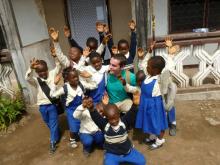
In recently released Runaway Radical: A Young Man’s Reckless Journey to Save the World, Jonathan Hollingsworth and his mother, Amy Hollingsworth (best-selling author of The Simple Faith of Mister Rogers) tell the story of college-age Jonathan’s mission trip to the African country of Cameroon. After participating in a short-term mission trip to Honduras, Jonathan felt inspired to serve others in a more profound way. When he connected with a missions organization that promised him a year of exciting opportunities to serve in Africa — and he was able to raise the necessary funding — he seized hold of the opportunity with a vulnerable heart and a zeal for personal sacrifice.
After reading the above description, you might be surprised to learn that Runaway Radical is actually a story of spiritual abuse. But by the time Jonathan prepared to leave for his yearlong trip to Cameroon, his entire family — and his supporters — were groomed for abuse. They were groomed by ideas perpetuated by many people and many organizations, teachings many Christians would follow without much of a second thought. The first idea asserts that everything done in God’s name is good. The second idea works in companion with the first, declaring there is always more you can be doing, more you can be sacrificing, to prove your commitment to your God and to his mission.
When Jonathan traveled to Cameroon, not only did his host prevent him from serving in the ways he had hoped, his mission organization used him and his funding for their own selfish purposes with little regard for his health and well-being. During his time in Cameroon, Jonathan’s organization forbade him from developing relationships with locals whose behavior did not follow their stringent moral code, defined for him who the “real” Christians were, and denied him immediate access to medical care. Jonathan also learned that the leader of the organization lied to him about the status of the the supposed projects of which Jonathan was to be a part.
What began as Jonathan’s eager and well-intentioned trip slowly and painfully morphed into a constricted and disillusioning journey of physical, mental, emotional, and spiritual anguish.
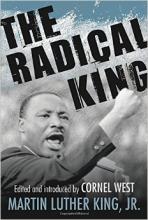
“WE ARE AT the moment when our lives must be placed on the line if our nation is to survive its own folly.”
Martin Luther King Jr. gave this stinging critique of the apathetic nature of both the U.S. church and the general public more than 40 years ago. While some things have changed for the better, the truth remains that the three evils of society that King named (racism, militarism, materialism) continue to pervade U.S. culture, crippling our moral and ethical foundation.
It is difficult to imagine that someone the FBI once labeled as “the most dangerous man in America” would one day have his own national holiday. Each year we celebrate the life of King with an incomplete and romanticized retelling of the impact he had on society during and after the civil rights movement. He dreamed of a better nation, but what was it about his dream that made him a nightmare to the U.S. government?
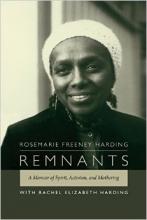
Rosemarie Freeney Harding describes the reaction of her friend—Albany, Georgia-based civil rights leader Marion King—to a physical attack.
In the summer of 1962, in the middle of the Albany campaign, Marion and I were both pregnant. During the campaign, Marion often visited movement workers who were jailed in local facilities throughout Dougherty and Terrell counties—taking them food, checking on conditions where they were kept, relaying messages. On one occasion as she exited a jail, a policeman who felt she was not moving fast enough kicked her in the back so that she fell to the ground. Marion fell so hard that she lost the baby.
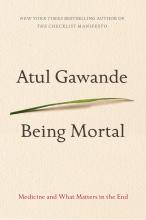
EARLY IN Being Mortal, surgeon Atul Gawande tells the story of Joseph Lazaroff, a patient with incurable prostate cancer. His medical team pursued multiple treatments, including emergency radiation and surgery, but Lazaroff ultimately died. What most struck Gawande later was that he and the team avoided talking honestly about Lazaroff’s choices—even when they knew he couldn’t be cured.
“We could never bring ourselves to discuss the larger truth about his condition or the ultimate limits of our capabilities, let alone what might matter most to him as he neared the end of his life,” Gawande writes. “The chances that he could return to anything like the life he had even a few weeks earlier were zero. But admitting this and helping him cope with it seemed beyond us.”
Why is that? For one, Gawande’s medical training didn’t prepare him for dealing with frailty, aging, or dying, he writes. He and his peers were taught to “fix,” to heal people with expertise, tools, and tests. Like most doctors, he approached his patients’ challenges as medical problems to solve, whether they were the accumulations of old age or terminal illness.
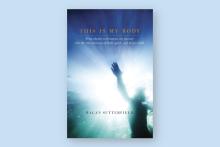
WE LIVE IN an age of deep fragmentation. Like the ancient Gnostics, who believed in a deep divide between mind and body, we too are inclined to elevate the mind, or the spirit, over the body. The critic Harold Bloom once suggested that the religious practice of most Americans is “closer to ancient Gnostics than to early Christians.”
Ragan Sutterfield’s new memoir, This is My Body: From Obesity to Ironman, My Journey into the True Meaning of Flesh, Spirit, and Deeper Faith, recounts the story of his own struggles amid the fragmentation of our times. Having wrestled with being overweight since his childhood, Sutterfield eventually finds himself with a failing marriage and at his heaviest weight. He is faced with the incongruity that he is an environmentalist and farmer, doing grueling work to care for the land and creation, and yet taking poor care of his own body.
This is My Body is a compelling story of conversion, not unlike St. Augustine’s Confessions, as Sutterfield finds himself drawn out of the typical U.S. sort of Christianity that has little regard for the body and into a deeper faith in Christ, in which spirit and body are deeply interwoven. After the collapse of his first marriage, Sutterfield surrenders himself to the disciplines needed to care better for his body, specifically controlling his diet and becoming serious about exercise. From this conversion point onward, Sutterfield begins to learn and experience an incarnational faith in which our bodies cannot be taken for granted. He writes:
What if God ... became flesh and remains enfleshed? What if God not only has a heart that longs for our love but also a heart that pounds with blood? What if God has skin that drips with sweat? What if the God who offered his body as a sign of love also wants us to experience our bodies as a gift of ... love? Christians must worship a God who is all of these things because we worship a God who was made manifest to us in the human, embodied life of Jesus.
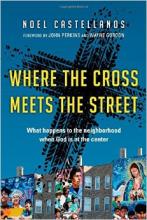
NOEL CASTELLANOS is the CEO of the Christian Community Development Association, a network of Christians committed to seeing people and communities restored spiritually, economically, physically, and mentally. In order to nurture that holistic work, committed CCDA practitioners move into under-resourced neighborhoods and try to foster community. Castellanos’ experience with CCDA and a lifetime of missional community has informed his new book, Where the Cross Meets the Street: What Happens to the Neighborhood When God Is at the Center (IVP Books), a powerful testament to the necessity of externally focused ministry. He was interviewed via email by Dave Baker, who is responsible for school accounts and diversity initiatives at Baker Book House.
Dave Baker: You write that in terms of diversity, the evangelical community is far behind the rest of society. In what ways?
Noel Castellanos: Most evangelical denominations and organizations are not very ethnically or culturally diverse in leadership. With the amazing demographic changes that are happening in our country, how can we possibly be in a position to effectively reach and disciple people of color if the leadership on boards and in executive positions is all white?
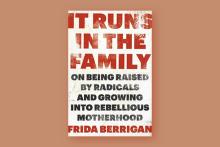
SOME PEOPLE (I was one) will initially read this book to learn what it was like for the author to grow up in Jonah House, a faith-based community of peacemakers in Baltimore, with internationally known activist parents Phil Berrigan and Liz McAlister providing strong ballast when not spending time in prison for nonviolent civil disobedience. I wanted to know what formed the vibrant Frida Berrigan, with whom I work on the National Committee of the War Resisters League. I learned about Frida’s birth in a basement, about Jonah House folks reading the Bible before days of work as house painters or being arrested at protests, about Frida and her sibs watching television on the sly, about the nitty-gritty of dumpster-diving at Jessup Wholesale Market.
But I learned much more from It Runs in the Family, and the “more” is at the heart of this fascinating book, which blends memoir, parenting advice, and connections between the questions parents ask about their children and the questions we should ask about the world. Phil Berrigan and Liz McAlister taught their children about the woes and warfare of the world; in this book, Frida also gently teaches us, while describing both her life as a child and her life as a mother to Seamus, Madeline, and stepdaughter Rosena.
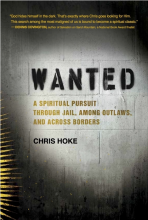
Wanted: A Spiritual Pursuit Through Jail, Among Outlaws, and Across Borders is non-fiction, but I read it like it was one of the latest blockbuster novels, this time with gorgeous writing. I couldn’t put it down, and I didn’t want the journey to end, following Chris Hoke through jails and streams and farms of Washington’s Skagit Valley as he grew from a young man interested in faith outside the walls of the church to a pastor to the “homies” of the area, as they called themselves—men whose criminal past or undocumented status have caused them to be among the most marginalized in our society. This book is imbued with dignity, prayer, and an understanding that relationships require forgiveness, on both sides. Wanted is a beautiful reflection on what the life of faith looks like in action.
Hoke grew up in southern California but was drawn to the dimmer corners of the Christian faith. He made his way to northwest Washington state to work with Tierra Nueva, a ministry that “seeks to share the good news of God’s freedom in Jesus Christ with people on the margins (immigrant, inmates, ex-offenders, the homeless).” We recently chatted about his work with Tierra Nueva, the value of a good metaphor, and how reading the Scriptures in prison can make them new.
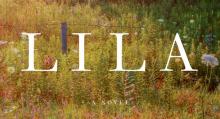
MARILYNNE ROBINSON’S Lila is the love story we thought we already knew, but didn’t. Lila takes us back to Gilead, Iowa, the same setting as Robinson’s novels Gilead and Home, describing the backstory and courtship of old Rev. Ames and the much younger Lila from a completely new point of view.
In Gilead, Ames describes his immediate, unlikely love for Lila, the hard-working wanderer. But Ames’ description of the feeling of love is more vivid than his description of the woman he loves.
The reverse is true in Lila. We learn Lila’s story through thick third-person prose. Robinson’s narration often reflects Lila’s stream of consciousness—a scattered, questioning pattern of thought, apt for a woman digesting the idea of small-town permanency after an exciting, scary, shame-filled life on the road. In the novel’s opening scene, Lila is just a small child, neglected and dying on the front steps of her house. Doll, a loving and hardened itinerant, kidnaps her just in time. It’s unclear if Doll stole or saved Lila. We can’t ever be sure. Either way, her love for Lila is fierce, and Lila comes to depend on it as they travel around the country, living off of door-to-door labor and inside jokes.
THE LAST THING that Ben Lowe could be accused of is “slacktivism,” which, as he describes in his latest book, Doing Good Without Giving Up, happens when we complain and point fingers about justice issues while being slow to take constructive action to address the situation.
From running for Congress at age 25 to helping to ignite a grassroots student environmental movement, Lowe’s track record for tackling complex and thorny problems where others would throw up their hands is remarkable. Even more remarkable is that after nearly a decade of such work, Lowe retains a gracious hope and steadfast sense of calling, despite being told by other Christians that he was being deceived by the devil, weathering bouts of burnout and depression, and continually facing entrenched systemic problems. This is why I trust him when he writes to encourage those of us whose hearts are heavy for the injustices in the world but often find ourselves stuck in the initial “slacktivist” inertia or dragged down later by opposition, burnout, and cynicism.
In Doing Good, Lowe outlines a sustainable impetus for social action and offers practices to sustain ongoing activism. We cannot be motivated by the desire to see dramatic change, he says, because this only “points people to ourselves and idolizes the change we seek.” It also ultimately lacks staying power. Instead, Lowe calls us to pursue faithfulness in our social action, which “points people to Christ ... and is ultimately the best—if not only—way to bring about the change God seeks.” Staying faithful, which the second half of the book covers, requires a continual reorientation to Christ as center through such practices as repentance, Sabbath, contemplation, and community.
LEONARDO BOFF’S Francis of Rome and Francis of Assisi: A New Springtime for the Church offers intriguing portraits of the current bishop of Rome and the saint that is his namesake. The book provides an introduction to these two extraordinary figures and includes a brief overview of the papacy, tracing how the office of the bishop of Rome eventually became the infallible pope.
The Roman Catholic Church depicted through Boff’s eyes is a church in crisis, reeling from the Vatican Bank and clergy sex abuse scandals. The institution and leadership have lost credibility in the eyes of many and the Roman curia is in need of reform. Yet this crisis is tempered by the election of Jorge Mario Bergoglio as pope, which for Boff fuels a tangible optimism for the church’s future.
Both men in these pages are called to the work of reform. Francis of Assisi’s conversion began when he heard a crucifix in a small church say, “Francis, go and restore my house, because it is in ruins.” Boff depicts Pope Francis as receiving a similar call, to reform the church so that it becomes a church that is poor, emphasizing humility and charity. Boff raises both men as models of living with the poor and like the poor, citing the now famous example of Francis going to pay his hotel bill after being elected pope.

Chris Kyle, often described as the most lethal sniper in U.S. military history, wrote in his autobiography that he prioritized his life in the following order: God, country, family.
But God doesn’t make a central appearance in the film American Sniper, which opens nationwide on Jan. 16. The film offers a few similarities to Unbroken, Angelina Jolie’s recent World War II epic about POW Louis Zamperini.
Both stories focus on the dramatic stories of warriors who died before the movie versions of their lives came out. Both American Sniper and Unbroken include an early scene of their families sitting in church. Both men struggle with substance abuse after returning from war.
And both films largely skirt the faith that Kyle and Zamperini said were key to their identity — and their survival.
As a Navy SEAL, Kyle reportedly recorded 160 kill shots during his four tours in Iraq. His story drew national attention after the release of his 2012 autobiography American Sniper: The Autobiography of the Most Lethal Sniper in U.S. Military History, which enjoyed a 37-week run on The New York Times’ best-seller list.
The Clint Eastwood-directed biopic starring Bradley Cooper debuted with a limited release on Christmas Day, the same day Unbroken opened nationwide.
Kyle opened his book by probing the ethics of combat as he wrote about his first sniper shot, when he had to kill an Iraqi woman holding a grenade.